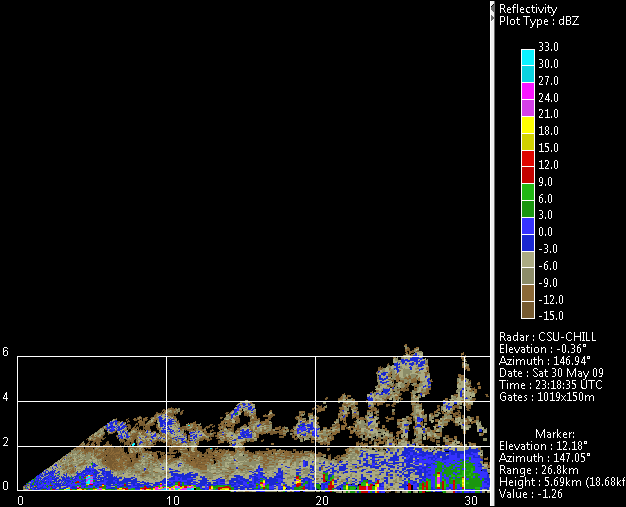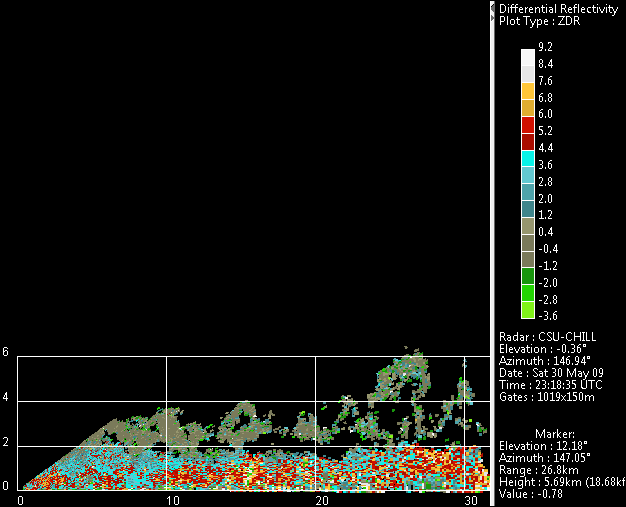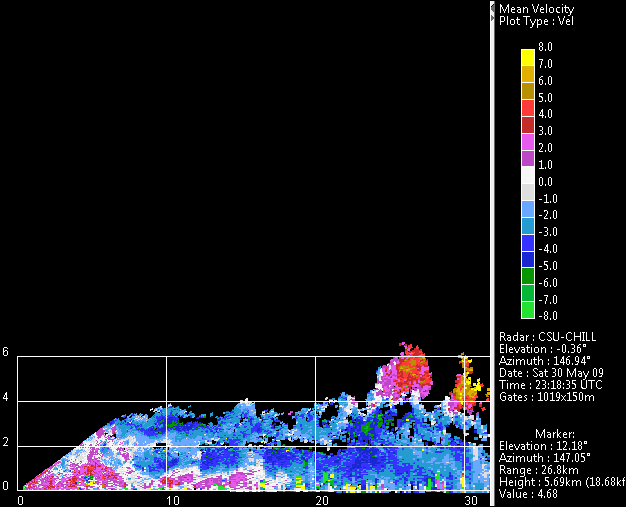WXlog/20090530 CU Bragg
From CSU-CHILL
The combination of moisture gradients and small scale turbulent motions at the edges of developing cumulus clouds often generate Bragg scattering echoes that are detectable by sensitive S-band radars. Since the moisture gradients are highest near the visible edges of the clouds, the Bragg scattering echoes from cumulus clouds typically appear as open holes in PPI scans, and "inverted cups" in RHI scans. The following CSU-CHILL images show examples from a late May afternoon when cumulus clouds were actively developing into scatter thunderstorms. Note: A finer resolution reflectivity color scale is used in the RHI plots.


